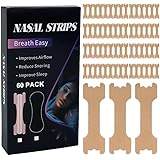Unlock Deeper Rest: Expert-Backed Stretches for Better Sleep
Reports consistently indicate that a staggering 35% of adults in the United States struggle with obtaining the recommended seven hours of quality sleep each night, profoundly impacting their overall well-being and daily function. While various factors contribute to this widespread sleep deficit, many overlook the simple yet potent power of physical preparation. The preceding video offers a succinct visual guide to five foundational **stretches for better sleep**, demonstrating easily replicable movements designed to prepare your body and mind for profound rest.
This comprehensive guide delves deeper into the physiological mechanisms behind these beneficial movements, providing expert insights that transcend the basic instruction. Incorporating a dedicated pre-sleep stretching routine can significantly downregulate your nervous system, transitioning you from a state of sympathetic arousal to parasympathetic dominance. Understanding the nuanced benefits of each pose empowers you to maximize their therapeutic potential, transforming a simple stretch into a powerful ritual for restorative slumber.
The Science of Serenity: How Stretching Prepares Your Body for Sleep
Engaging in gentle stretches before bedtime offers more than just physical release; it acts as a crucial physiological primer for sleep, signaling to your brain that it is time to wind down. Deep tissue work and controlled movements can help mitigate residual muscle tension accumulated throughout the day, which often acts as a silent impediment to relaxation. This physical loosening directly impacts your mental state, much like releasing the taut string of a bow allows the entire apparatus to relax and return to its natural state.
Furthermore, stretching stimulates the vagus nerve, a primary component of the parasympathetic nervous system responsible for initiating the body’s “rest and digest” response. This activation lowers your heart rate, decreases blood pressure, and calms an overactive mind, systematically dismantling the barriers to sleep. Conversely, ignoring this pre-sleep preparation can leave your body in a heightened state of alertness, making the transition to sleep a prolonged and often frustrating endeavor. Embracing these **stretches for better sleep** represents a deliberate act of self-care, orchestrating an optimal internal environment for deep, uninterrupted rest.
Child’s Pose (Balasana): Fostering Primal Relaxation
The Child’s Pose is a universally accessible restorative yoga posture renowned for its profound calming effects on the central nervous system. As demonstrated in the video, this pose involves kneeling with your torso folded over your thighs, forehead resting on the mat, and arms extended forward or alongside your body. This inward folding action provides a gentle compression to the abdominal organs, which can stimulate digestion and promote a sense of security, much like retreating into a protective cocoon.
Physiologically, Child’s Pose offers a mild spinal decompression, alleviating subtle tension along the vertebral column that might have accumulated from prolonged sitting or standing. Holding this pose for the recommended 30 to 60 seconds allows sufficient time for the proprioceptors in your muscles and joints to send calming signals to your brain. It acts as a mental reset button, dissolving the mental clutter and emotional residue of the day, preparing your psyche for the peaceful surrender of sleep. Moreover, the gentle pressure on the forehead is often associated with stimulating the prefrontal cortex, aiding in cognitive quieting.
Supine Twist (Supta Matsyendrasana): Unwinding Spinal Stress
The Supine Twist, a classic foundational movement, masterfully addresses rotational stiffness in the thoracic and lumbar spine, areas particularly prone to tension from daily activities. As the video illustrates, lying on your back and gently letting your knees fall to one side while keeping your shoulders grounded creates a profound yet accessible twist. This specific movement lubricates the spinal discs and encourages a healthy range of motion, which is crucial for overall postural integrity.
Performing 10 repetitions of this stretch, as advised, ensures a balanced release on both sides of the body, preventing compensatory tightening. This twisting action not only targets the muscles surrounding the spine, such as the obliques and erector spinae, but also provides a gentle massage to the internal organs, potentially enhancing their function. Think of it as wringing out a sponge; the twist expels accumulated tension, making space for fresh, restorative energy. By consciously engaging in this spinal rotation, you effectively release deep-seated stress, paving the way for undisturbed **sleep better stretches** and deep sleep.
Knee to Chest Pose (Apanasana): Releasing Lumbar Load
The Knee to Chest pose is an exceptionally effective stretch for decompressing the lower back and gently opening the hips, areas frequently burdened by prolonged sitting or physical exertion. The video’s guidance to perform this for 30 seconds on each leg is crucial for ensuring symmetrical release and maximizing the therapeutic impact. This simple action elongates the lumbar spine and stretches the gluteal muscles and hamstrings, which often contribute to lower back pain when tight.
When you draw your knee towards your chest, you create a mild traction effect on the lower spine, which can alleviate pressure on nerve roots and improve circulation to the area. This pose also subtly engages the hip flexors, promoting a greater range of motion that might otherwise be inhibited. Conversely, ignoring chronic tightness in these regions can perpetuate a cycle of discomfort, making it difficult for your body to fully relax in bed. Integrating this precise stretch into your nightly routine is akin to untying a knot that binds your lower body, facilitating effortless relaxation and deeper engagement with **stretches for better sleep**.
Thread the Needle Pose (Urdhva Mukha Pasasana variation): Unlocking Shoulder and Upper Back Release
The Thread the Needle pose is an indispensable stretch for releasing pervasive tension in the shoulders, upper back, and neck—common reservoirs of stress from modern lifestyles. As demonstrated by the 10 repetitions suggested in the video, this dynamic movement involves weaving one arm under the other, allowing the shoulder and side of the head to rest on the mat. This creates a deep external rotation of the shoulder and a beneficial stretch across the rhomboids and trapezius muscles.
This pose is particularly effective because it targets the often-neglected space between the shoulder blades, an area frequently constricted by hunched postures or desk work. The gentle leverage applied through the arm further enhances the stretch, promoting significant myofascial release. Think of your upper back and shoulders as complex gears that can become sticky; this stretch acts as a lubricant, restoring fluidity and ease. By consciously unraveling this tension, you diminish physical discomfort that might otherwise disrupt your sleep architecture, allowing your nervous system to achieve a more profound state of calm.
Leg Elevation (Viparita Karani variation): Calming the Circulatory System
Leg Elevation, particularly the variation of simply raising the legs against a wall, is an incredibly soothing pose that offers profound benefits for both the circulatory and nervous systems. The video’s recommendation of holding this for 60 seconds is ample time to initiate a cascade of beneficial physiological responses. This inverted posture allows gravity to assist venous return from the legs back towards the heart, reducing swelling and fatigue in the lower extremities that can prevent deep relaxation.
Beyond its circulatory advantages, Leg Elevation is a powerful tool for downregulating an overstimulated nervous system. By gently reversing blood flow and subtly shifting visceral pressure, the pose activates the baroreceptors in your neck and chest, signaling to your brain to lower heart rate and blood pressure. This effect is akin to turning down a rheostat, gradually dimming the body’s internal alert system. Instead of remaining in a state of hyperarousal, your body receives a clear message to transition into a restful, restorative mode, making this an essential component of any routine involving **stretches for better sleep**.
Incorporating these expert-backed **stretches for better sleep** into your nightly regimen can profoundly transform your sleep quality. Consistency is paramount; just as a ship requires a steady hand to navigate, your body thrives on routine. These deliberate, gentle movements not only release physical tension but also signal to your nervous system that it is time to transition into a state of profound rest and regeneration, setting the stage for deeper, more restorative slumber.








